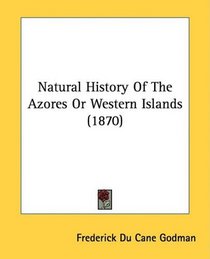Search -
Natural History Of The Azores Or Western Islands (1870)
Natural History Of The Azores Or Western Islands - 1870
Author:
Purchase of this book includes free trial access to www.million-books.com where you can read more than a million books for free. This is an OCR edition with typos. Excerpt from book: Very many of the birds of the Azores are also found in the other Atlantic groups; but they have only two species, viz. Fringitta tintillon and Serinus canarius, ... more »
Author:
Purchase of this book includes free trial access to www.million-books.com where you can read more than a million books for free. This is an OCR edition with typos. Excerpt from book: Very many of the birds of the Azores are also found in the other Atlantic groups; but they have only two species, viz. Fringitta tintillon and Serinus canarius, ... more »
ISBN-13: 9781437129724
ISBN-10: 1437129722
Publication Date: 10/1/2008
Pages: 368
Rating: ?
ISBN-10: 1437129722
Publication Date: 10/1/2008
Pages: 368
Rating: ?
0 stars, based on 0 rating
Publisher: Kessinger Publishing, LLC
Book Type: Paperback
Members Wishing: 1
Reviews: Amazon | Write a Review
Book Type: Paperback
Members Wishing: 1
Reviews: Amazon | Write a Review
Genres:
- Law >> General
- Law >> Legal Theory & Systems >> Jurisprudence




